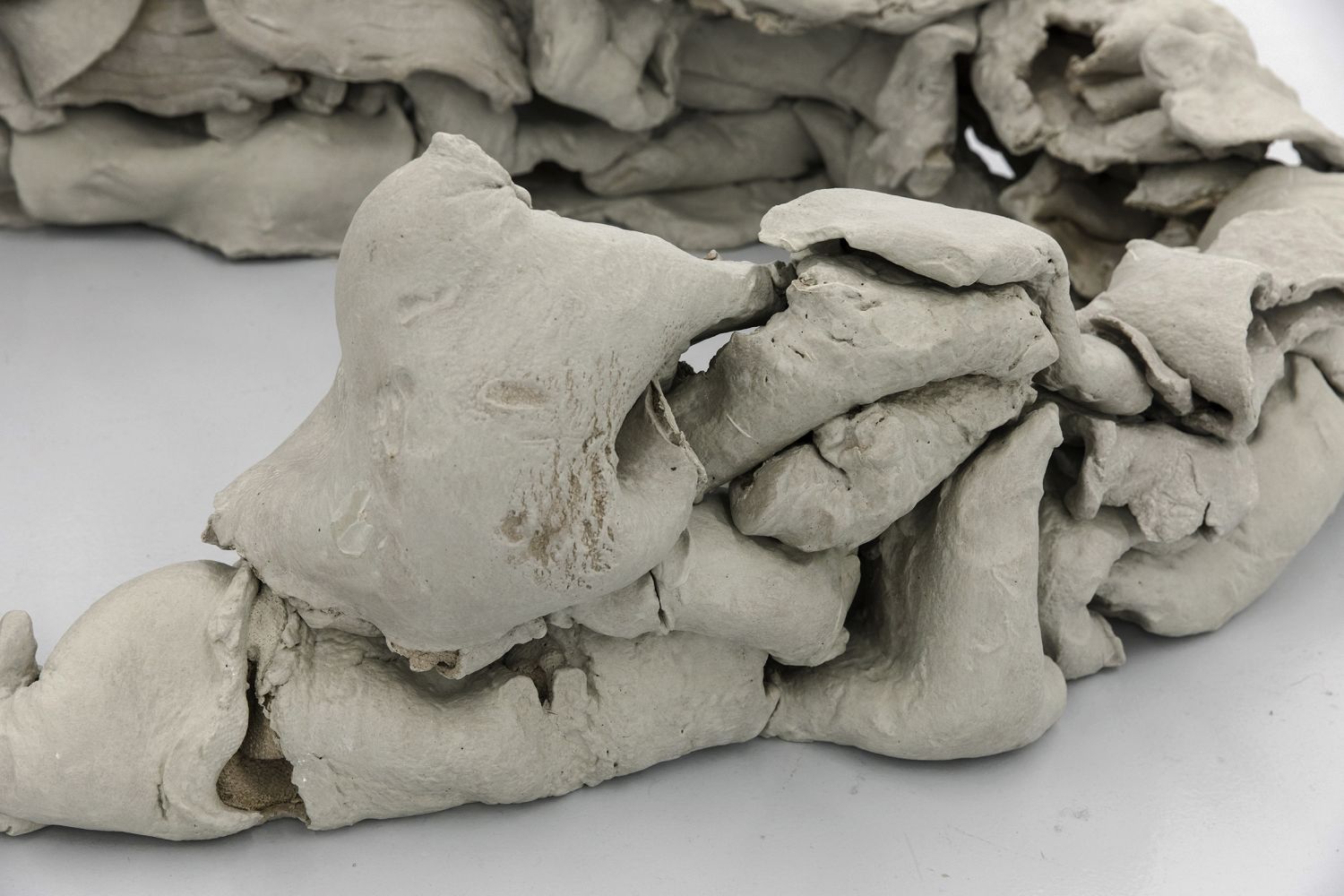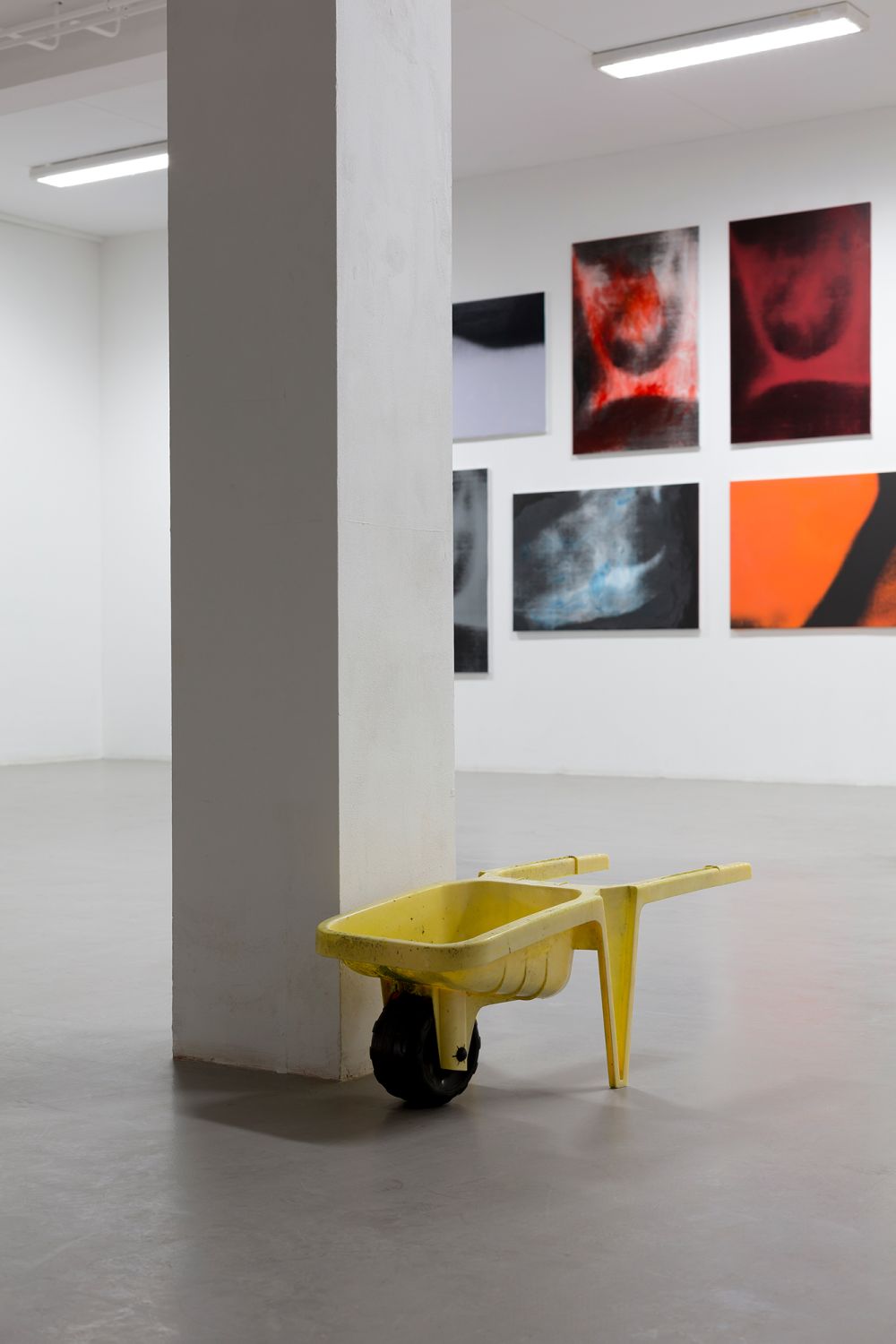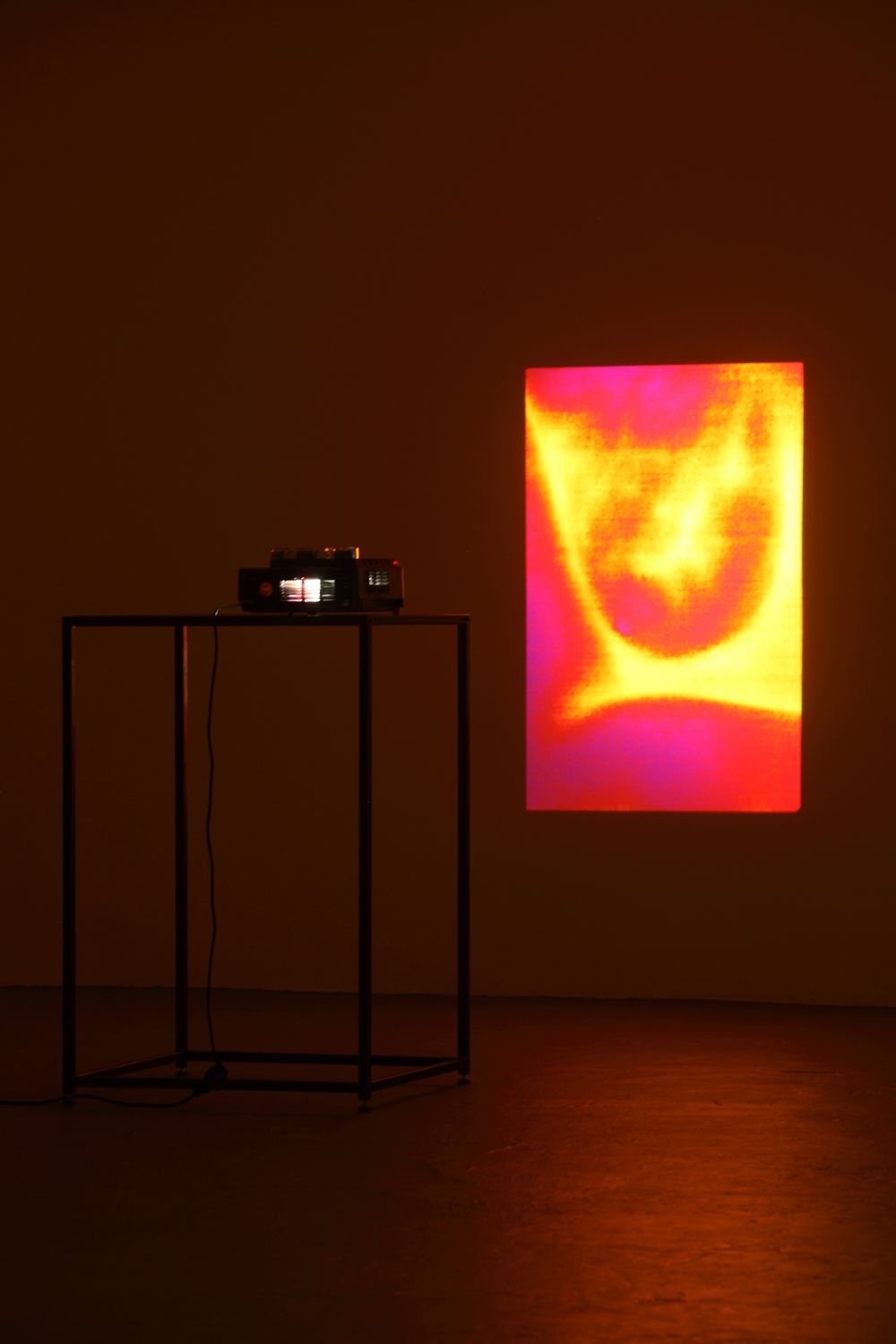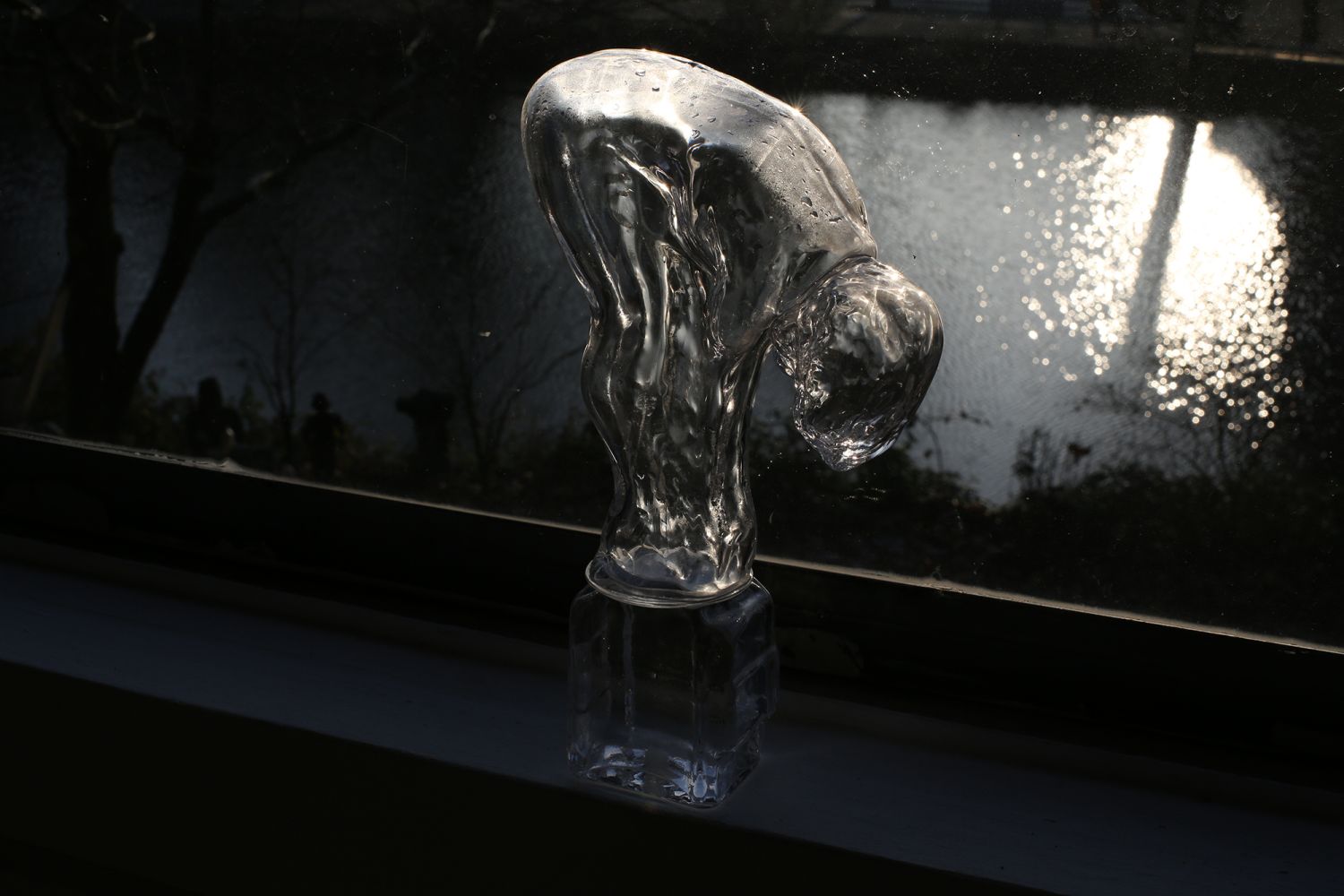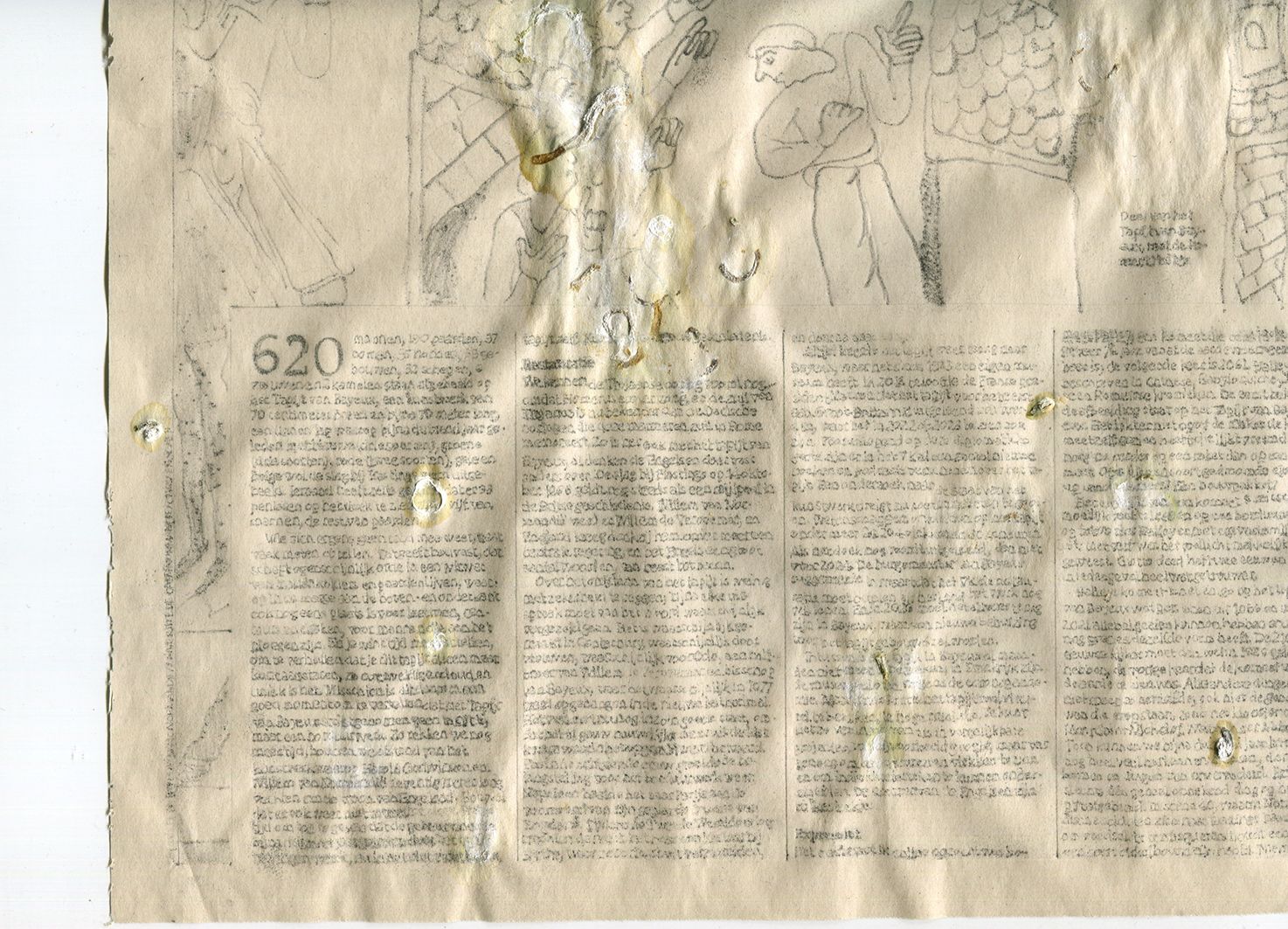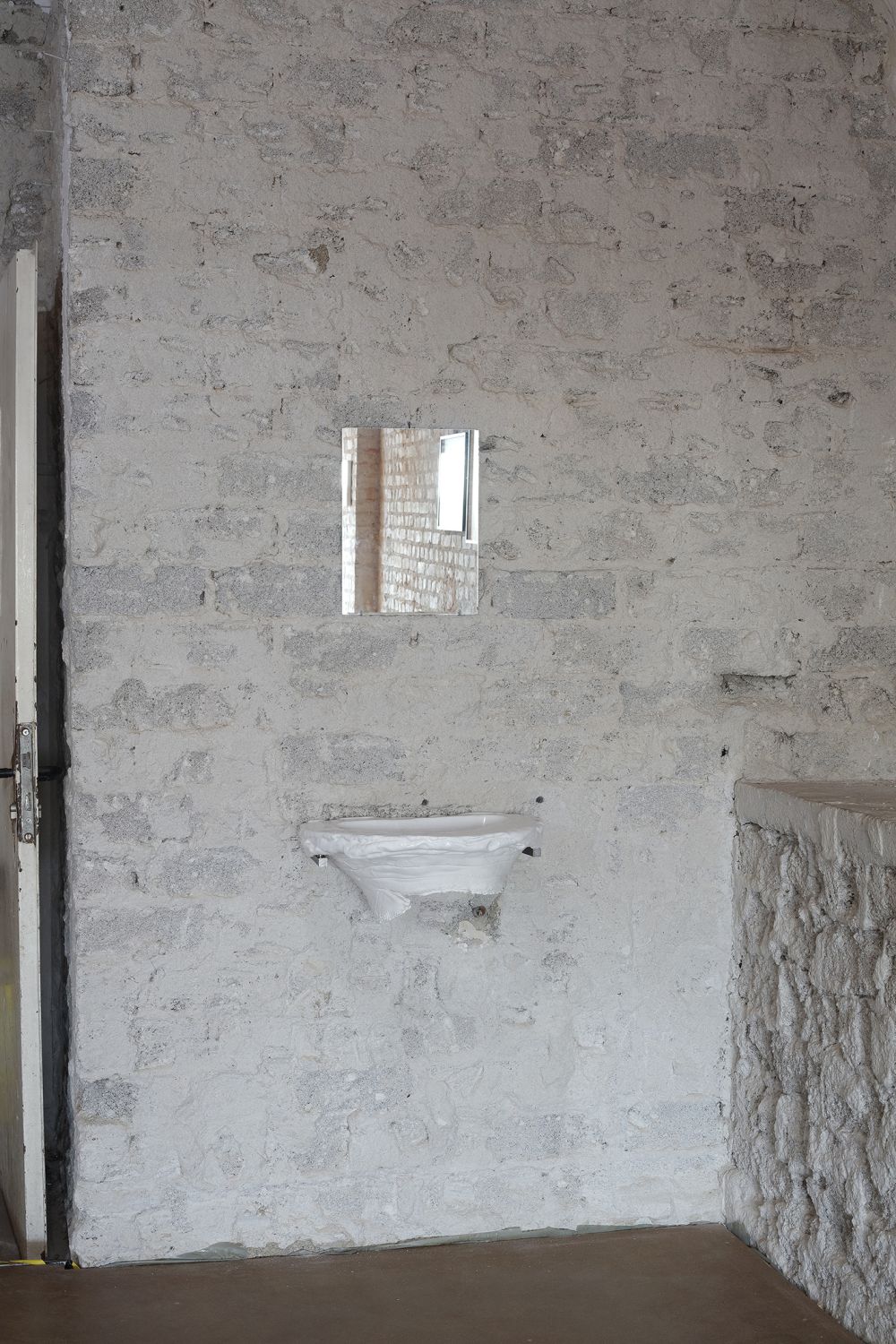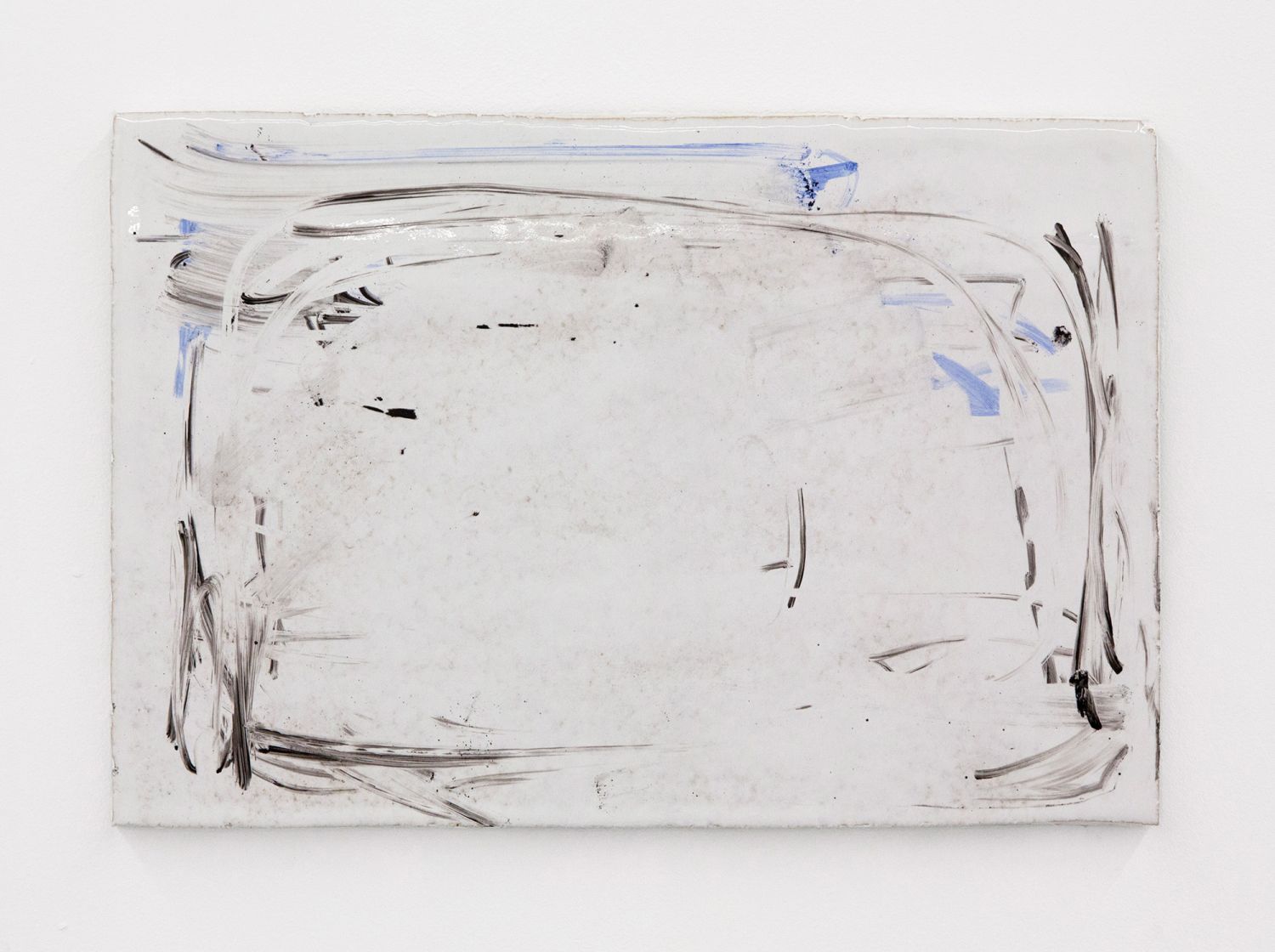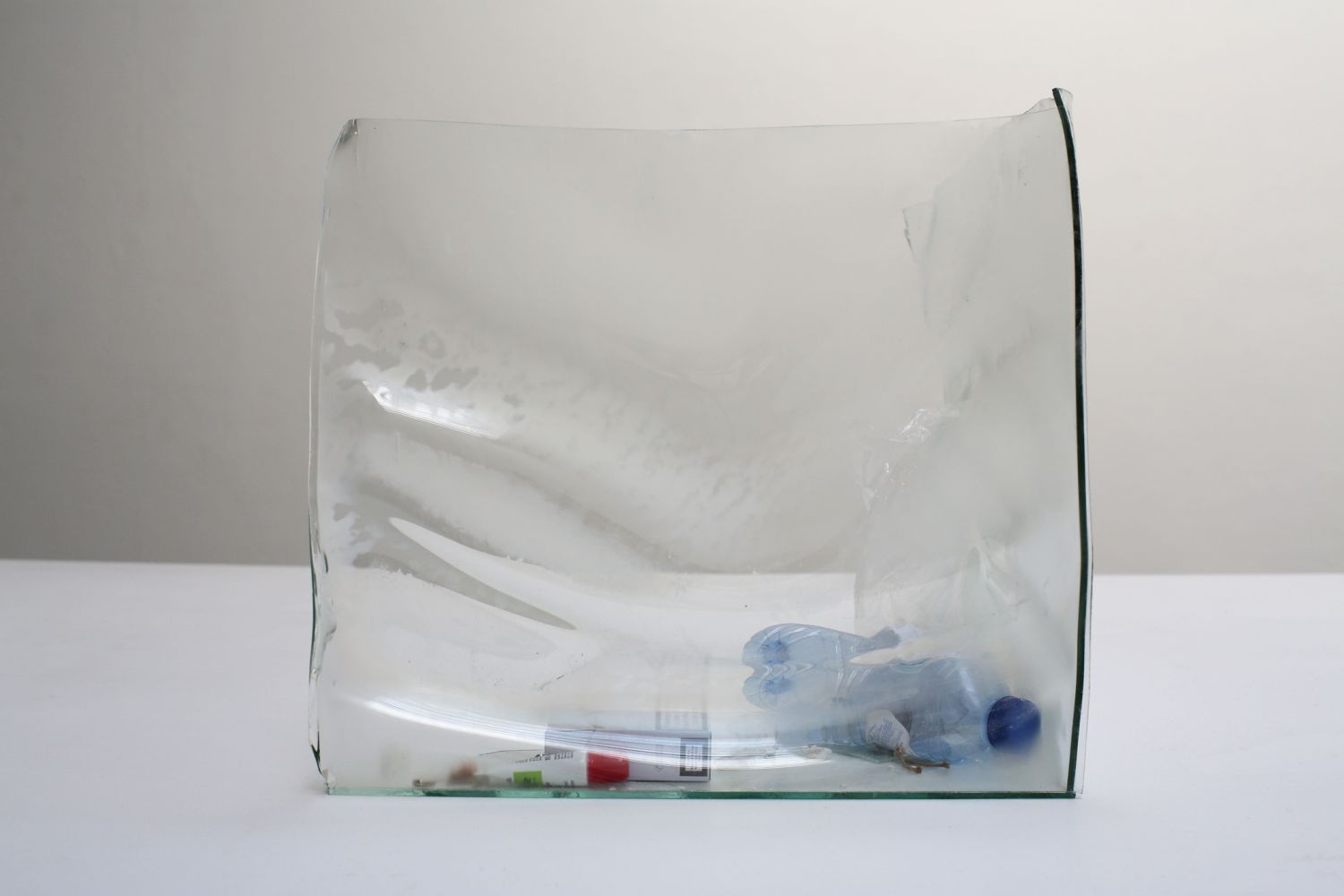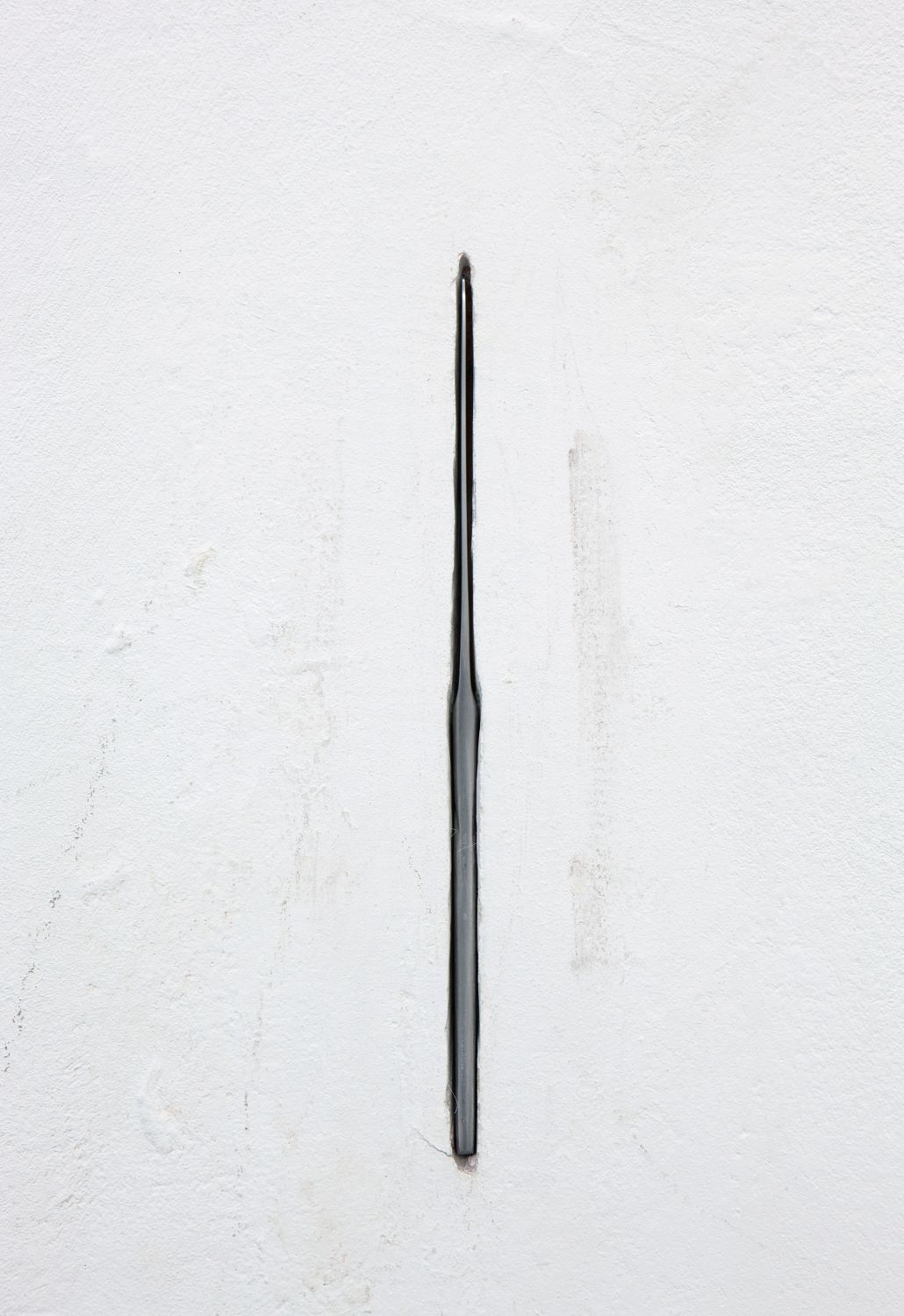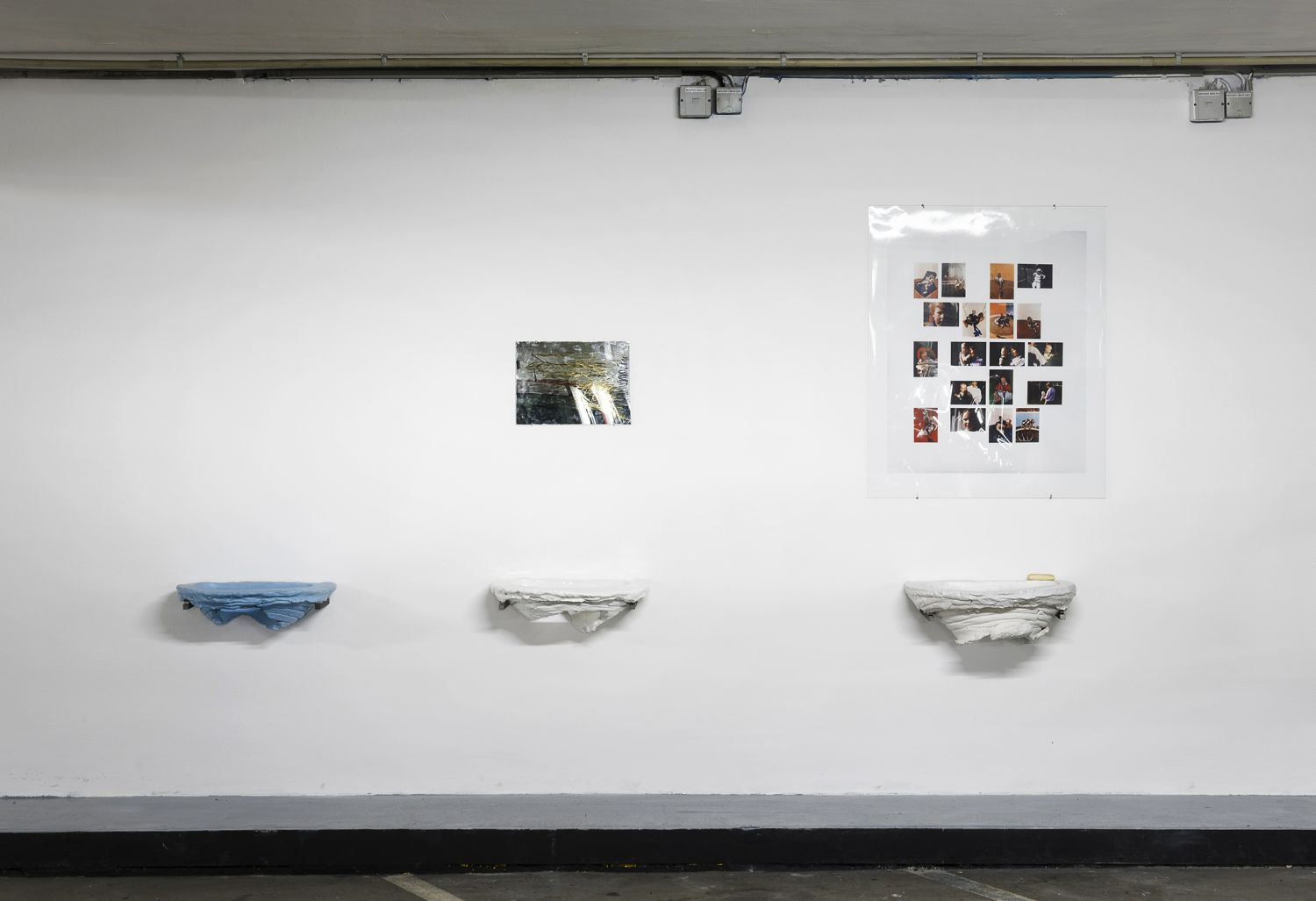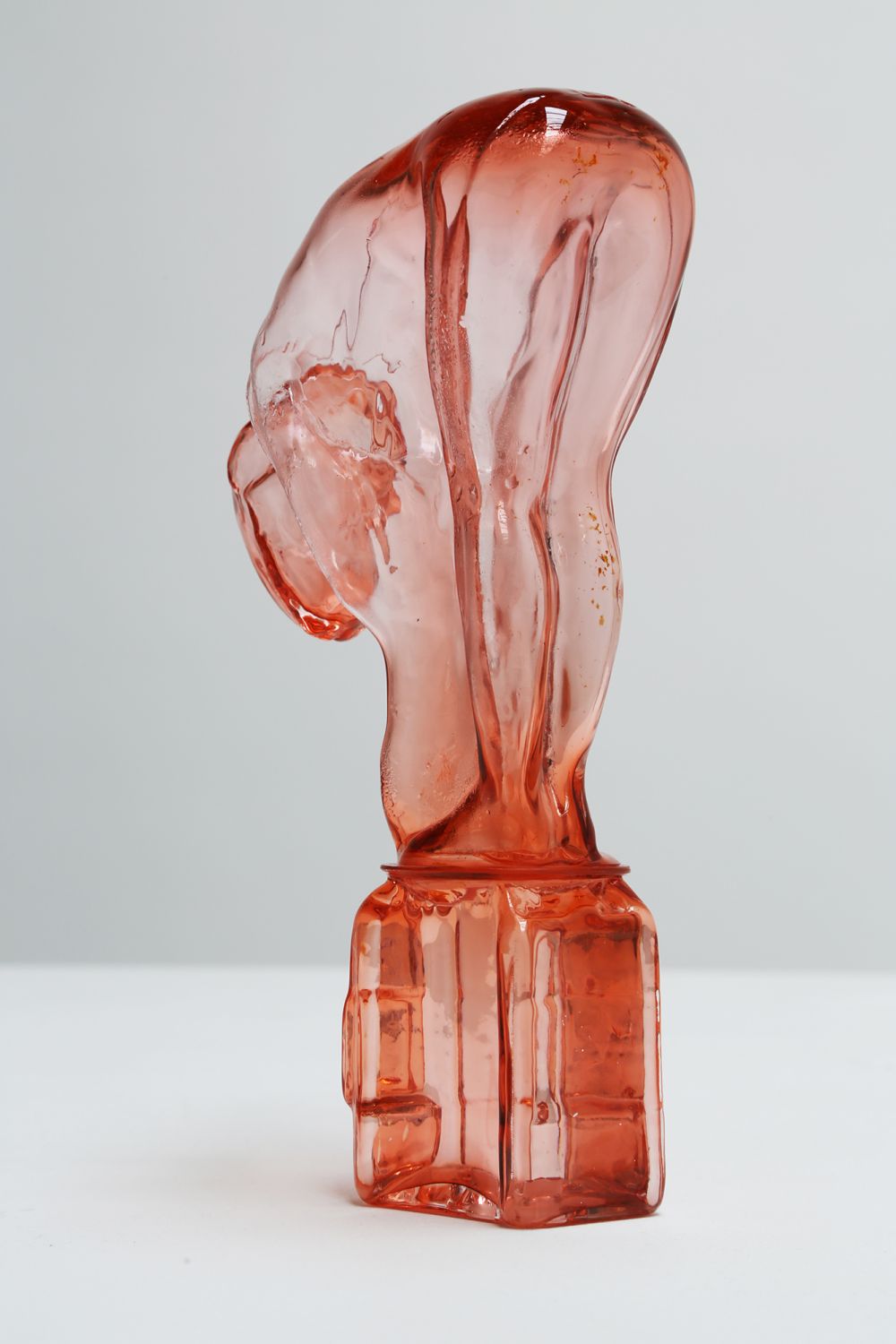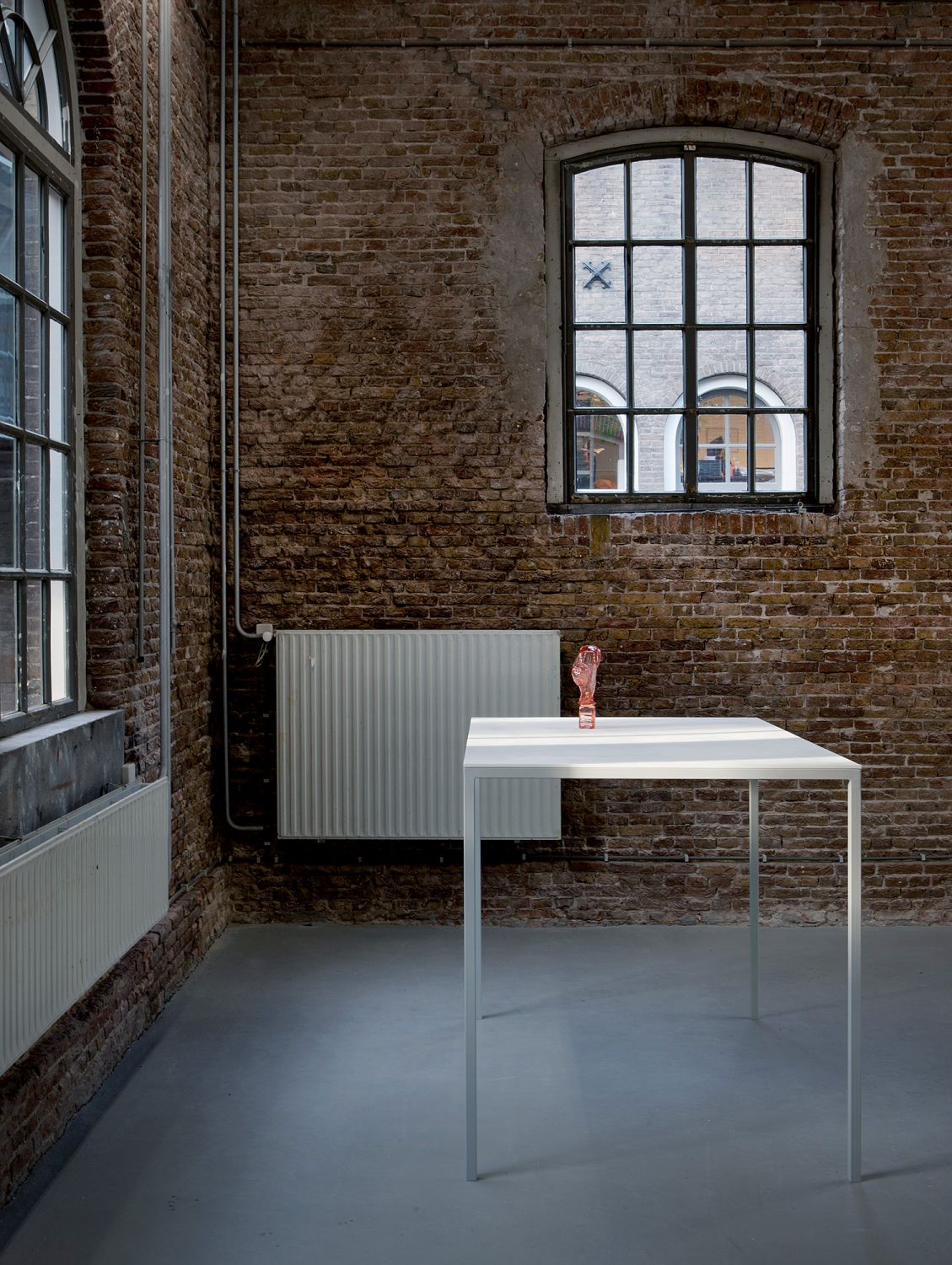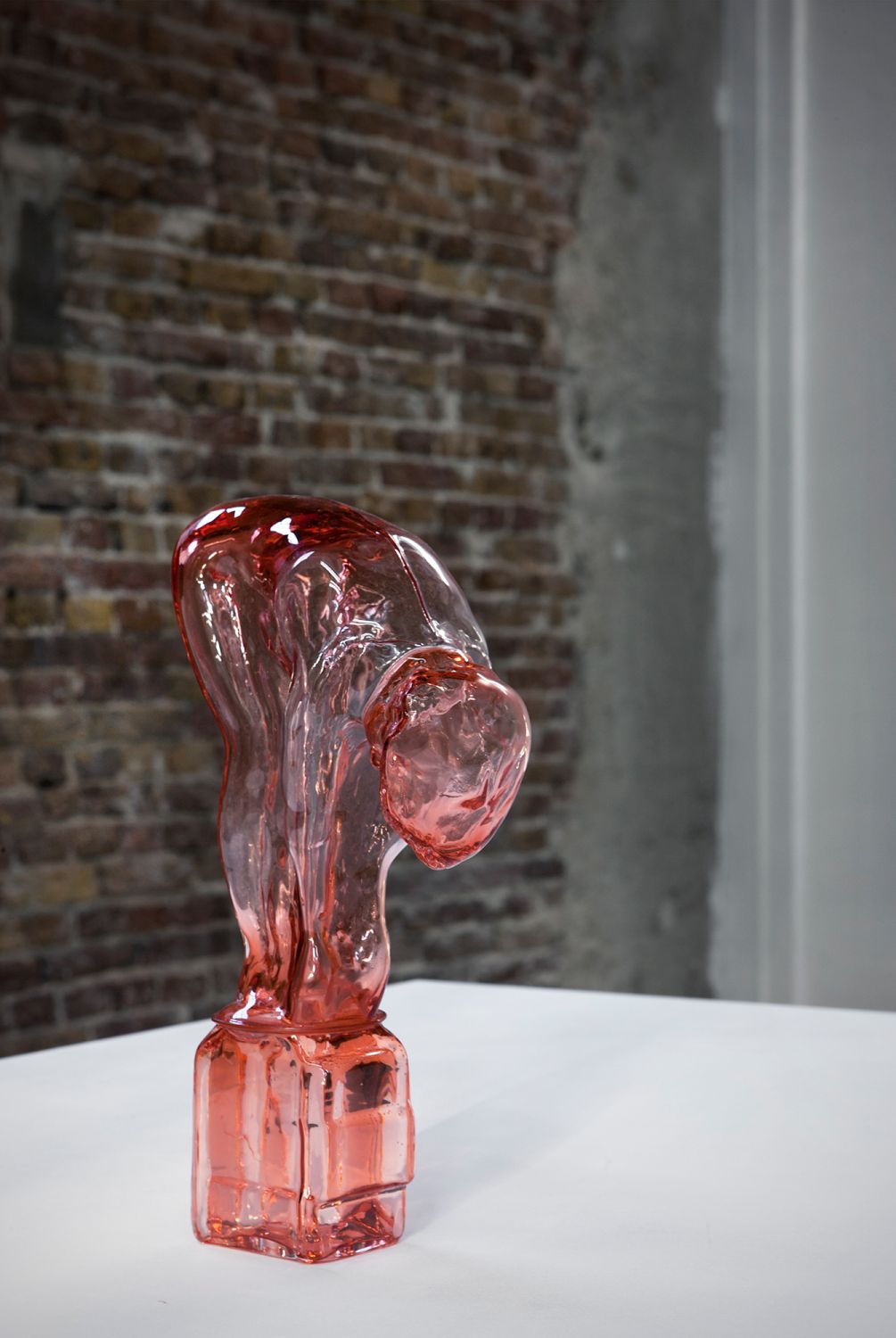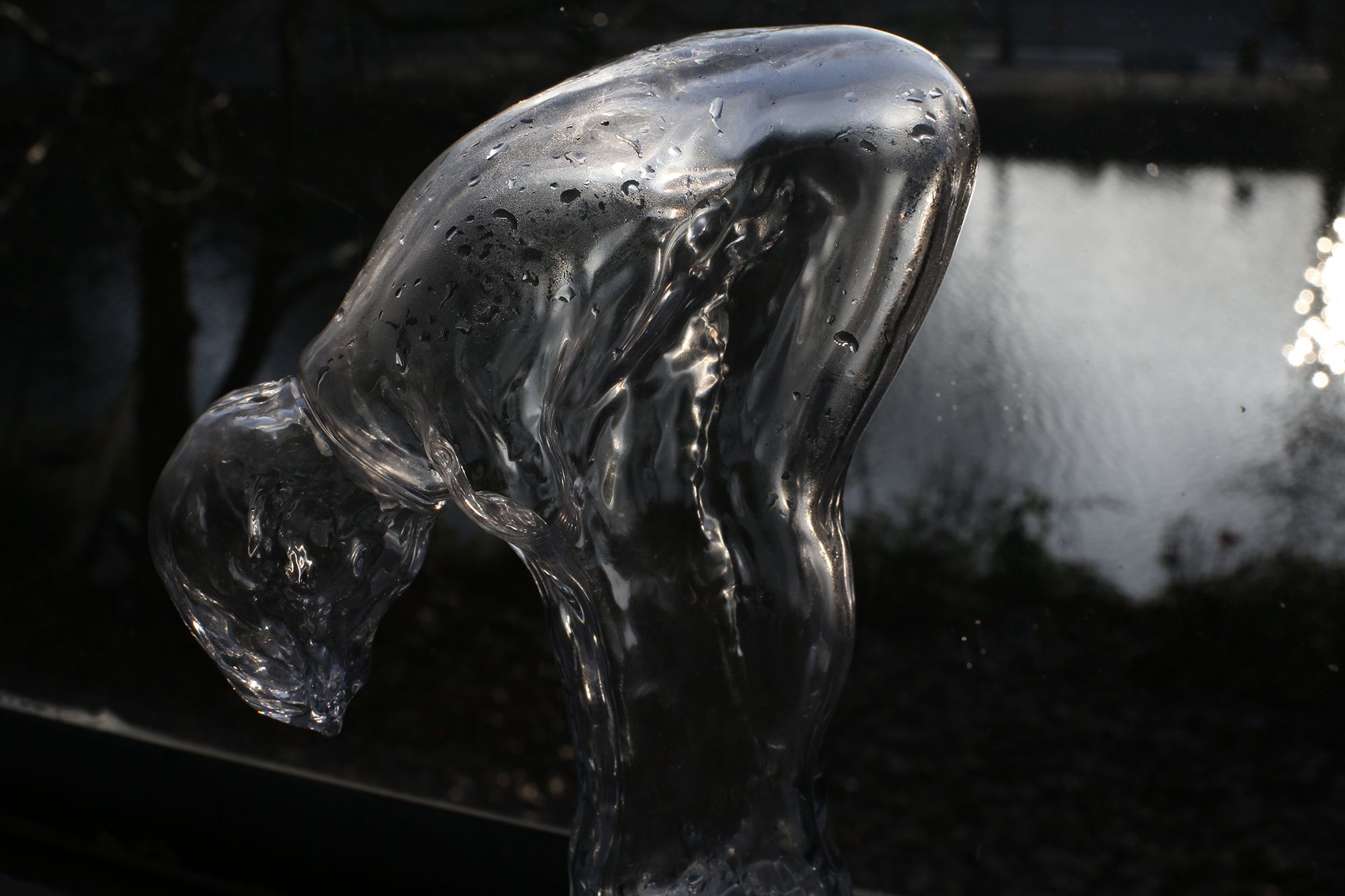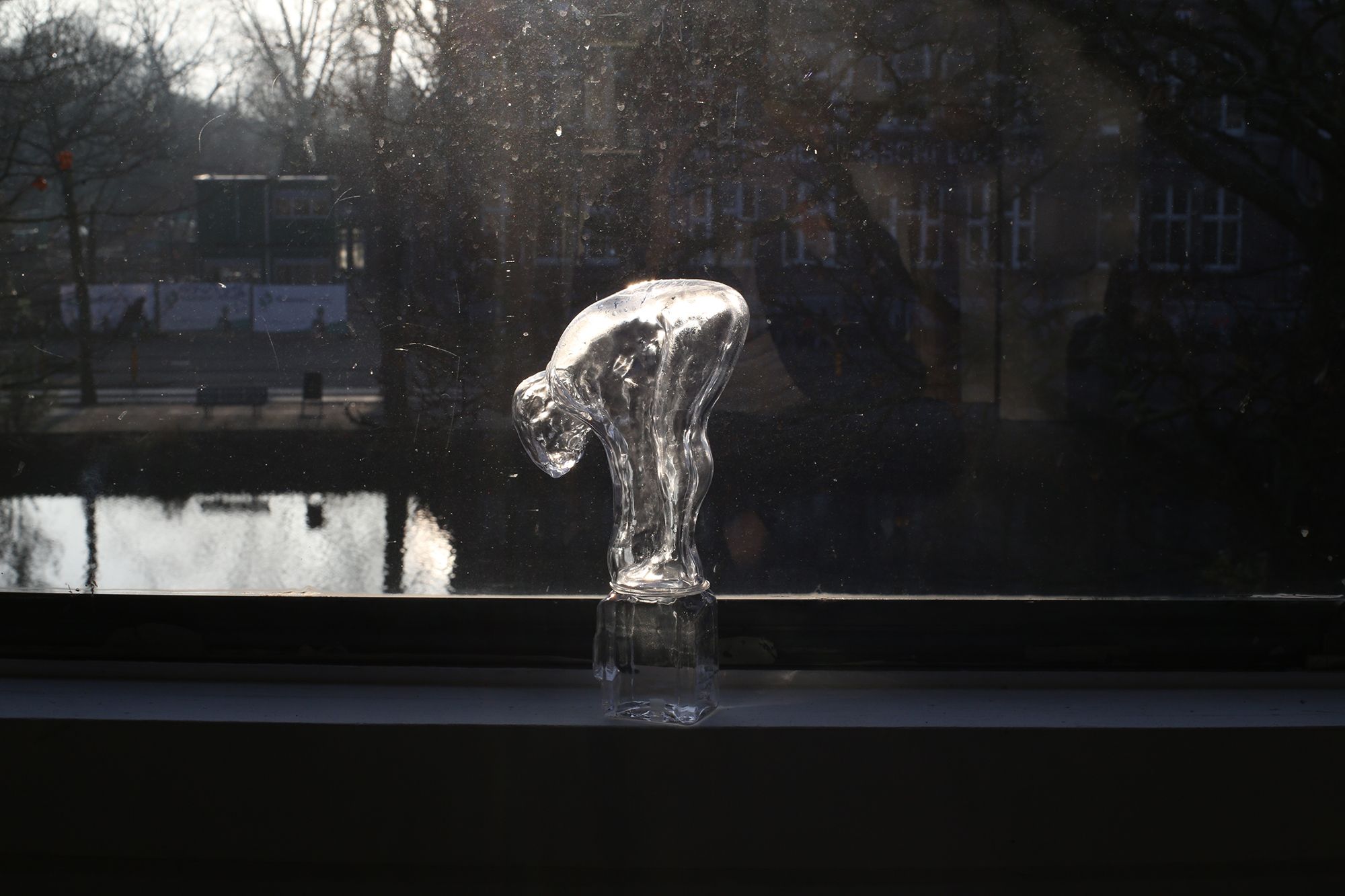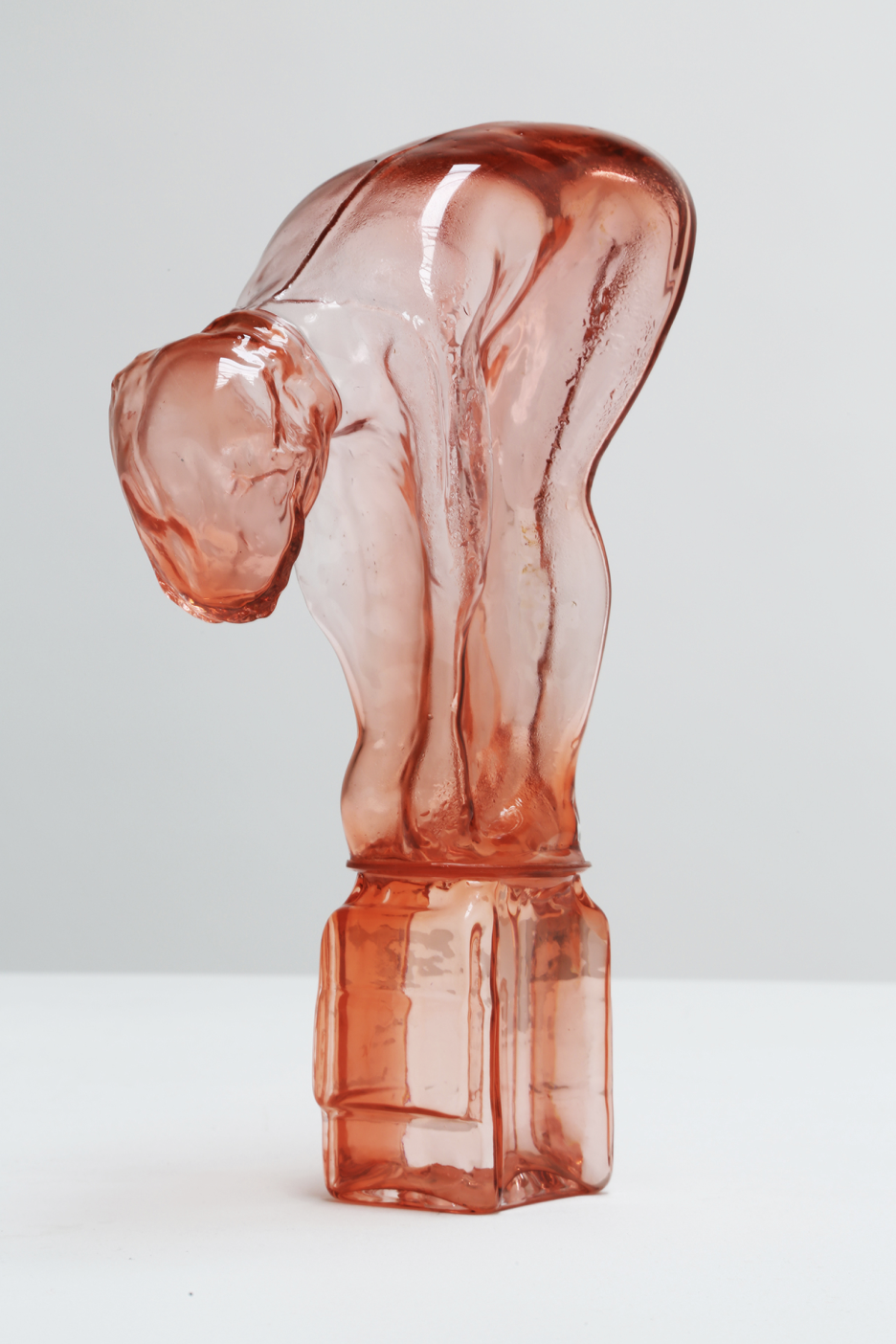About the work
A sculpture of a human figure standing bent forward on a stool. Its hands are touching the seat, back and bottom are stretched up. It is the size of a water bottle – 30 cm and made of glass. Not casted massive, but blown hollow. Body and stool are melted into one figure. The seat, that could also be seen as a pedestal, is reminiscent of a tumbler; only the implied chair legs define it as a piece of furniture. Like a jar it is filled with water.
The water reaches the seating surface exactly at the point where feet and hands touch. The body is covered with small drops;
condensed water that collects on the inner surface of the glass. The inside and the outside are visible simultaneously.
It looks as if the figure had just climbed on to the stool and is undecided if she will straighten herself or jump head-first into the deep. Is this really a significant height? It evokes the association of a domestic accident, rather than granting a better point of view. Or of a childhood game – like hop- ping on one leg the next ten meters along the pavement. A small shift changes ones perspective, a selfstimulation. Me alone in the room, nobody is watching. And jumping? Into water? From a diving tower filled with water or from water in the shape of a div- ing tower. Fine pearls form on the head and back, then drip down the body. The body is sweating – from the inside.
The tension is ‘in’ the sculpture. A tank that captures an abeyance, an inner state of instability. The German word ‘Gefäß’, like the english word ‘vessel’, is used for glasses, tumblers, vases, jars – containers in any sense. But the same word stands for vein, for a blood vessel. These vessels built a filigree circulation that connects the alternating stream of the high and the low pressure system. A stream driven by an organic pump that is beating the rhythm to which we move our bodies. The glass sculpture is like the materialisation of an interruption – the body is frozen in this position, unable to move. Concurrently, in this moment of transition, it embodies the potential for a wide spectrum of motions. The chair that lifted up the body is also the source of the condensing water. Sweat is a way of compensation for the body and the glistening beads of perspiration are a small detail on someones brows. For the one on the stool sweating is a condition, a state of being.
As a teenager, together with my father, I saw a staging of Beckett’s Happy Days. I can re- call the setting clearly in my mind, even the emptied stalls after the break. Centre stage, Winnie is embedded up to above her waist in a mound, only able to move her upper body. She busies herself putting up a parasol, digging things out of a plastic bag, making herself up and talking – soliloquising with- out drawing breath. But no word about her actual situation. She sinks deeper and deeper into the mound until only her head is above ground. From there my thoughts jump to a small glass Mary on the windowsill, a bottle filled with water from Lourdes. The water has evaporated with time, drained from Mary’s head, shoulders, stopping at her waist. For me she was always the converse of Winnie. An inverted Winnie.

